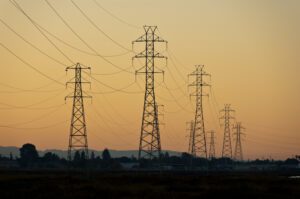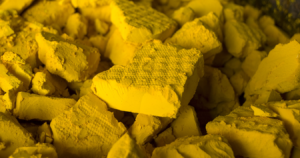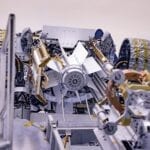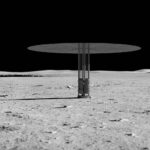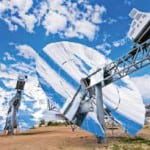With the precarious descent of NASA’s Mars rover Curiosity into the Red Planet’s Gale Crater a success, NASA now plans to gather geological and environmental data from the Martian surface to determine whether the planet has ever offered environmental conditions favorable for life—and collect data for a manned mission. The 1-ton, six-wheeled rover has been outfitted with a jackhammer at the end of a 6-foot robotic arm to break up rocks, and can scoop the sample into its onboard spectrometer, but it can also fire its laser at a rock, vaporizing it for analysis. It must do all this while operating on the Martian surface, where temperatures range from freezing at the height of the Martian summer to well into negative double digits at other times.
So how is Curiosity powered? It uses an advanced version of a radioisotope power system (RPS) used in previous deep space probe missions, says NASA’s Mars Science Laboratory. In the most basic terms, these are nuclear batteries—generators that produce electricity from the natural decay of plutonium-238 using a set of solid-state thermocouples. The thermocouples in radioisotope thermoelectric generators (RTGs) use heat from the natural radioactive decay of plutonium-238 to heat the hot junction of the thermocouple and use the cold of outer space to produce a low temperature at the cold junction of the thermocouple. According to NASA, though the key advantage of RPSs is that they operate continuously, independent of sunlight for a long time, they are also insensitive to cold, radiation, and other effects of the space environment.
As NASA explains, more than 40 RPSs have been used over four decades on more than two dozen NASA spacecraft. The Apollo missions to the moon; the Pioneer, Voyager, Ulysses, Galileo, Cassini, and Pluto New Horizons missions to the outer solar system; and the Viking landers sent to Mars were all equipped with RTGs. “RTGs have never been the cause of a spacecraft accident, [though] they have been on board three space missions that did fail for other reasons,” NASA says. “In all three cases, the RTGs performed as designed.”
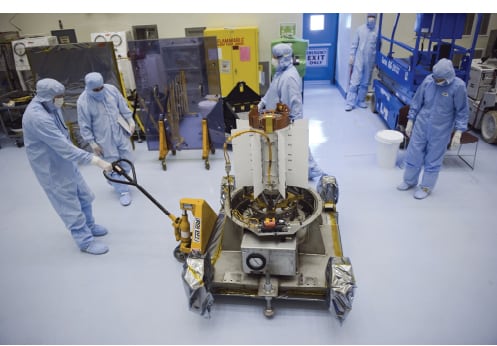 |
| 2. Powering Curiosity. Spacecraft technicians at NASA’s Kennedy Space Center in Florida trundle a multi-mission radioisotope thermoelectric generator (MMRTG) after a fit-check in the car-size Curiosity rover. Waste heat from the MMRTG will be circulated throughout the rover system to keep instruments, computers, mechanical devices, and communications systems within their operating temperature ranges for more than two Earth years. Source: NASA/Kim Shiflett |
The MMRTG is based on the proven radioisotope power system design used to provide electrical power for NASA’s two earlier Viking landers, which operated on the surface of Mars for 40 months and more than six years, respectively. Unlike previous rover designs, however, Curiosity is designed not to be affected by Martian dust, NASA says, which became a problem during the Spirit and Opportunity missions, when dust covered solar panels. The MMRTG carries eight individually shielded general purpose heat source modules, compared to 18 modules in the previous RPS generation. And, unlike some of the previous generations of RPSs, the MMRTG can operate in the atmosphere of a planet as well as in space, NASA says.
The success of the MMRTG means that NASA’s mission-driven RPS program is now turning its focus to validate and develop another basic RPS unit, the Advanced Stirling Radioisotope Generator (ASRG). This system also uses plutonium-238 as its heat source, but it would be much more efficient, producing about 130 W to 140 W of electricity using less than 1 kilogram of plutonium-238. That is less than 25% of the fuel needed for a comparably powered RTG, NASA says. The specific power, or power produced per unit mass of the generator, is also greatly improved over current RTG designs.
“The ASRGs advancements are made possible by the use of highly efficient Stirling engines coupled with linear alternators (together known as Advanced Stirling Convertors, or ASCs) to convert the natural radioactive decay heat of Pu-238 into electricity,” NASA explains. Sterling engines have been in use since the early 1800s, but they have never been used to generate electricity for spacecraft, mostly because the “benefits they offer also bring some challenges that must first be overcome,” NASA says.
Unlike RTGs, the ASRG is a somewhat complex thermodynamic system with moving parts. Like any dynamic system, it requires a controller to control piston stroke and to convert the AC output of its alternators to DC suitable for a spacecraft bus. “This level of complexity is manageable and will be worth investing in to gain the benefits offered by the ASRG. A final challenge to address is to provide the high reliability demanded of spacecraft power systems,” NASA says.
—Sonal Patel is POWER’s senior writer.


